One-minute review
The Hisense U7QF is a razor-sharp 4K TV that offers a whole lot for its mid-range price, with a picture that looks just as good upscaling HD sources as it does with native 4K.
Starting at £799 for a 50-inch model, it packs in wide HDR support as well as enabling Dolby Atmos passthrough to a compatible soundbar – which, given the built-in 20W speakers included here, you’ll probably want to invest in.
There are some shortcuts being deployed to ensure the Hisense U7QF offers all of this at such a reasonable price point, though, which mainly shows in its imperfect motion control. You won’t get full 10-bit HDR, either, but its 8-bit+FRC solution still looks pretty spectacular for the most part, and it’s safe to say this 4K TV has the right balance between price and performance, even with the sacrifices that entails.
It’s a pretty television, too, with a bold, angular TV stand that doesn’t try to hide its support at the sides – while app support is extensive, aside from a lack of Disney Plus.
Some of the features new to its VIDAA U platform don’t land quite as well as others, such as an embarrassing Art Mode imitator that pulls sketches and drawings from DeviantArt, and a VIDAA Free app that just redirects you to YouTube videos. These blots are easy to overlook, though, and for the everyday act of TV watching, the U7QF is more than up to the task.
Price and availability
The Hisense U7QF is available in the UK, with 50-inch, 55-inch and 65-inch sizes currently on sale. You’ll find it retailing at £799 for the 50-inch model, £899 for the 55-inch model, and £1,499 for the 65-inch.
That pricing lands it squarely in the mid-range pricing category: neither a budget model, nor a truly high-end set. As the next set after the flagship U8QF Quantum Series, though, you should expect more than last year’s affordable U7B ULED.
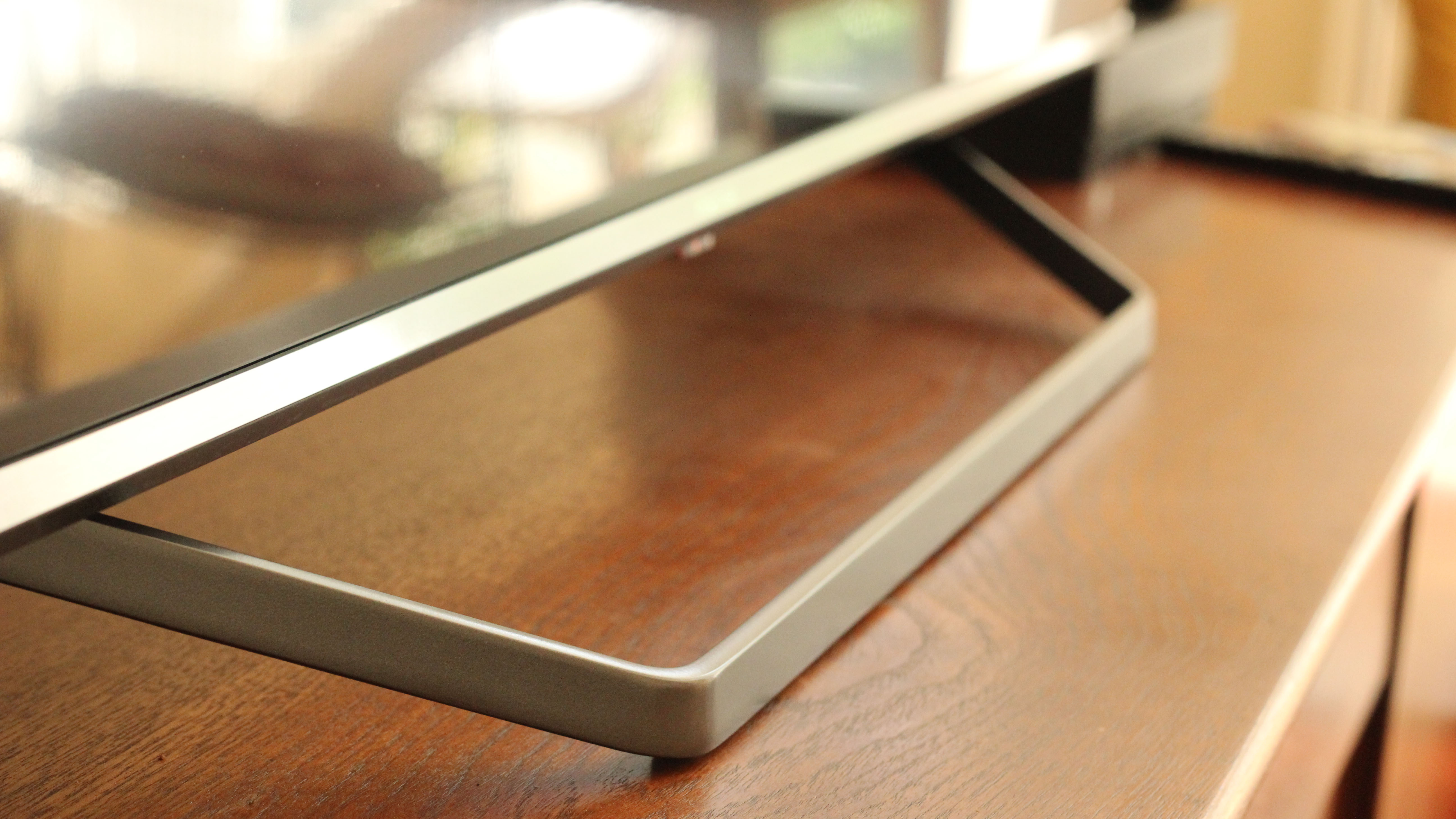
Design
- Sleek TV stand
- HDMI ARC
- Inessential remote app
One area where the Hisense U7QF excels is its hardware design. It manages to sport a sleek appearance, with a thin bezel and an angular two-tone base with subtle diagonal lines – as well as a trapezium-shaped stand that gives it a futuristic look, while offering better balance than a pair of feet likely would.
You’ll find four HDMI 2.0 ports, as standard, with one of those ports supporting ARC to direct audio to an external soundbar or speaker. You won’t get the advanced versions of these technologies (HDMI 2.1, eARC), but they’ll certainly do the job.
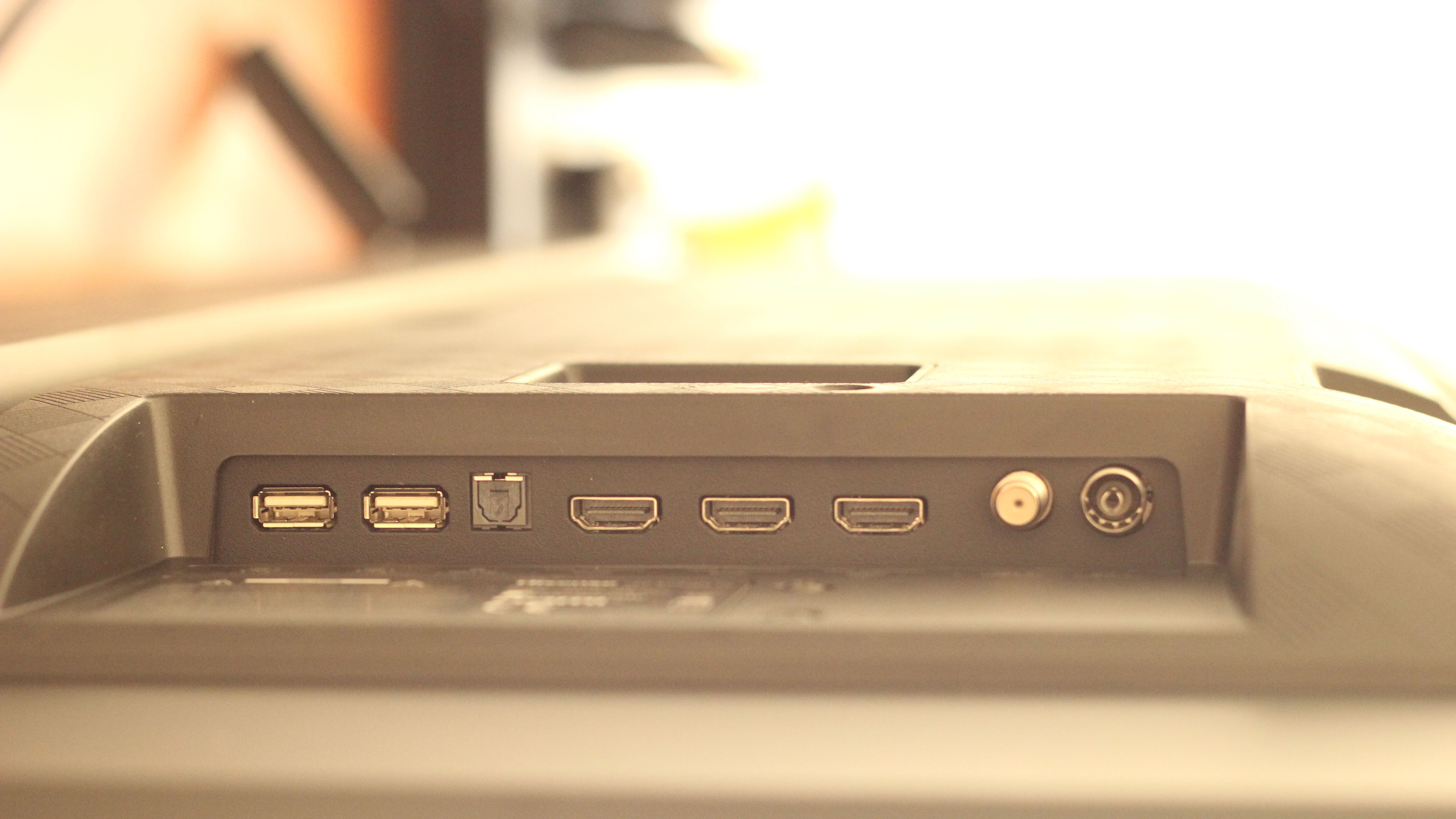
The remote is tall and slim, with ridged plastic buttons that are satisfying and responsive to click. A lot is crammed into a small amount of space, but the design feels relatively unique, which is notable in a flooded television market. You’ll also get dedicated buttons for Netflix, YouTube, Rakuten TV, Prime Video, and Freeview Play – essentially all the apps you’re most likely to use – meaning you have plenty of handy shortcuts.
You can download a tie-in mobile app, RemoteNOW, though we’d probably advise you against using it. Once downloaded, it offers a way to browse available content on VIDAA U, as well as turn your touchscreen into a trackpad to navigate app icons or playback controls onscreen.
The app permanently runs in the background, though, even when closed, and we had to ‘force stop’ the application to stop it taking up RAM on our phone. (We’re told this is being fixed in an July update, but regardless the app probably isn’t worth installing.)
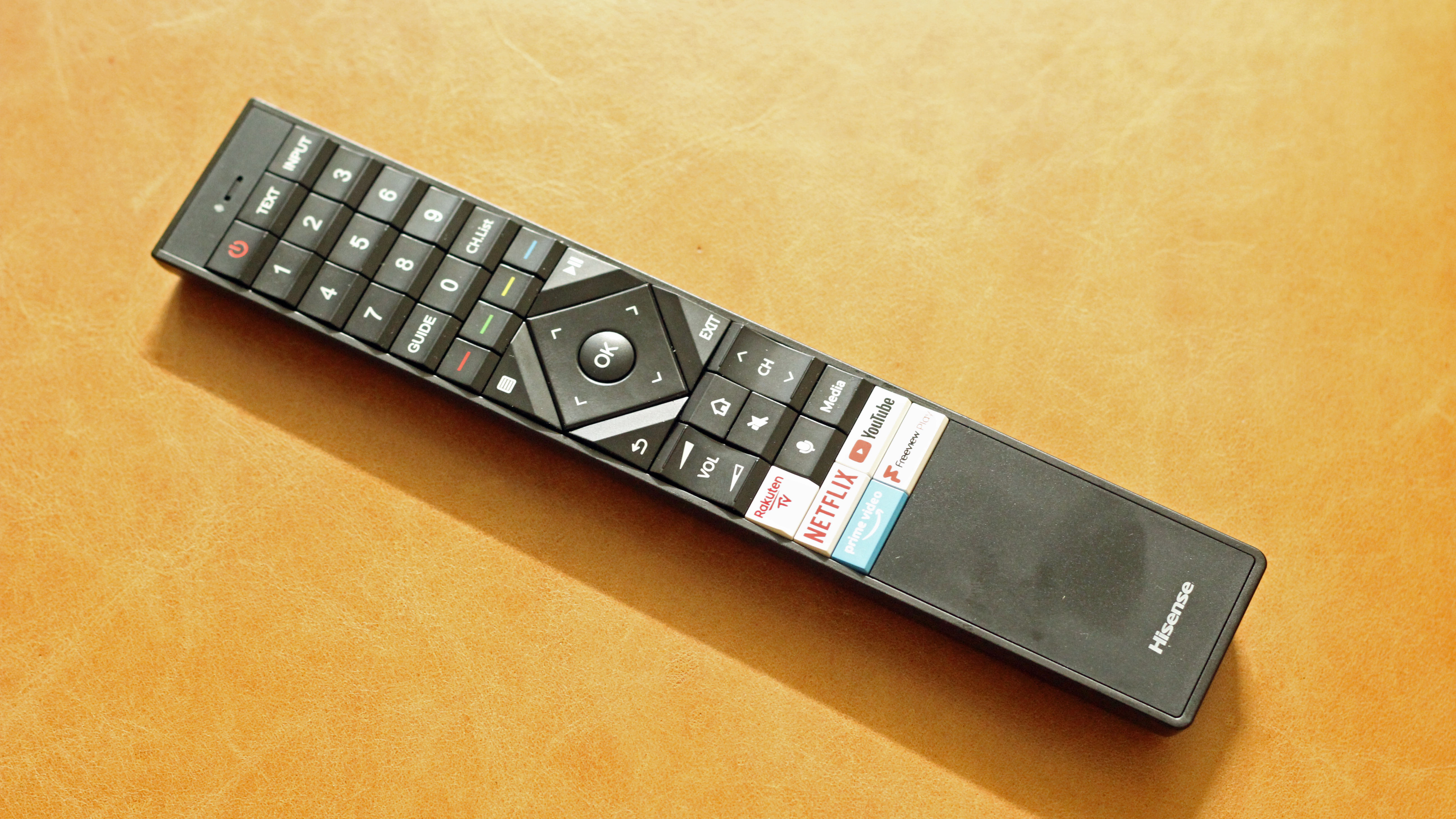
Smart TV (VIDAA U)
- Clean interface
- No Disney Plus
- Poorly-made art mode
Hisense makes use of a variety of different smart TV platforms, depending on the set you’re watching, including the third-party Roku and Android TV platforms. The U7QF, however, uses a proprietary OS called VIDAA U.
VIDAA U boasts a very clean interface, helped by the fact it uses a dedicated home page, rather than an icon overlay in the manner of Panasonic’s My Home Screen or LG’s webOS. App icons and recommended titles are all large and readable, with a relatively simple function to arrange apps how you like – with one exception.
The top-left app on the home screen is Netflix, and it’s rather odd that it’s the only app whose position you can’t change. During setup, we were even presented with a prompt to watch Netflix, making it abundantly clear that the dominant TV streaming service had paid a premium to maintain pride of place on 2020 Hisense TVs.
App support is generally sufficient. You’ll get stalwarts like Netflix, Amazon Prime Video, YouTube, Freeview Play, Britbox, Chili, Deezer, Plex, and BBC News / BBC Sport. Disney Plus, however, is nowhere to be found.
What’s most notable about VIDAA U in 2020 is the inclusion of two new services: VIDAA Free and VIDAA Art.
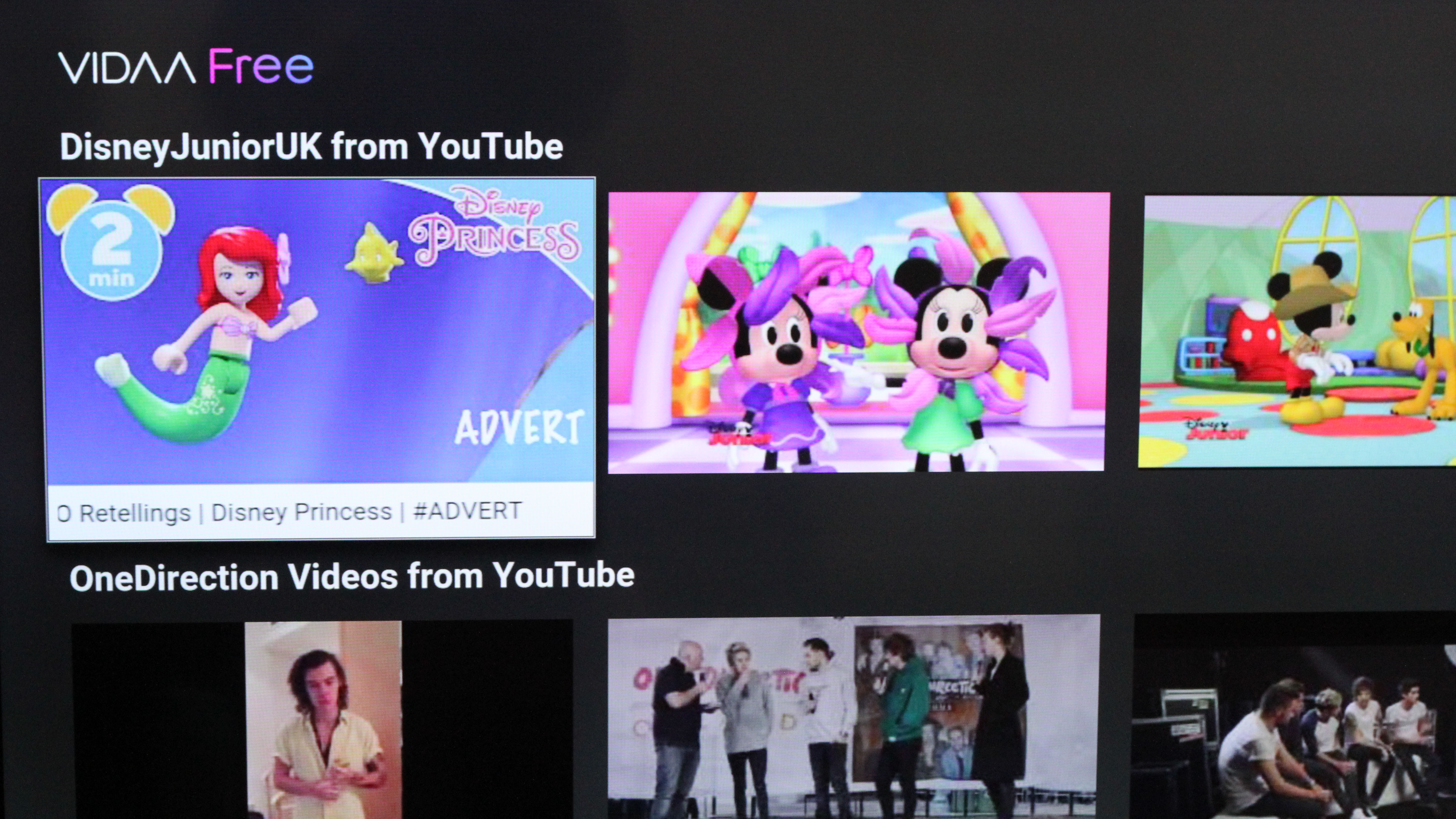
The former is a one-stop portal for free video content, though from what we could tell it was only YouTube videos clips repackaged together, rather than the more substantial free TV streaming services found in Samsung TV Plus or Rakuten TV.
The latter, VIDAA Art, seems like a rehash or Samsung’s Art Mode – a service on Samsung’s designer TVs that lets you display classic artworks and paintings on your screen when the TV isn’t in use. Unlike Samsung’s version, however, most images are drawn from the fan art website, Deviant Art, giving the impression of a bootleg app, or one that couldn’t procure the wider image rights it had hoped for. You also can’t stick to a static image, meaning you’re condemned to cycle through various pictures against your will.
We’re told these features are in “the early stages of development”, but for now it’s probably better to give them a wide berth.
It’s also worth noting that the Hisense U7QF opens on an HDMI input when you turn it on – handy for gamers or those using a streaming stick or 4K Blu-ray player most of the time, but possibly irritating for those who just want to go to the home screen at startup.
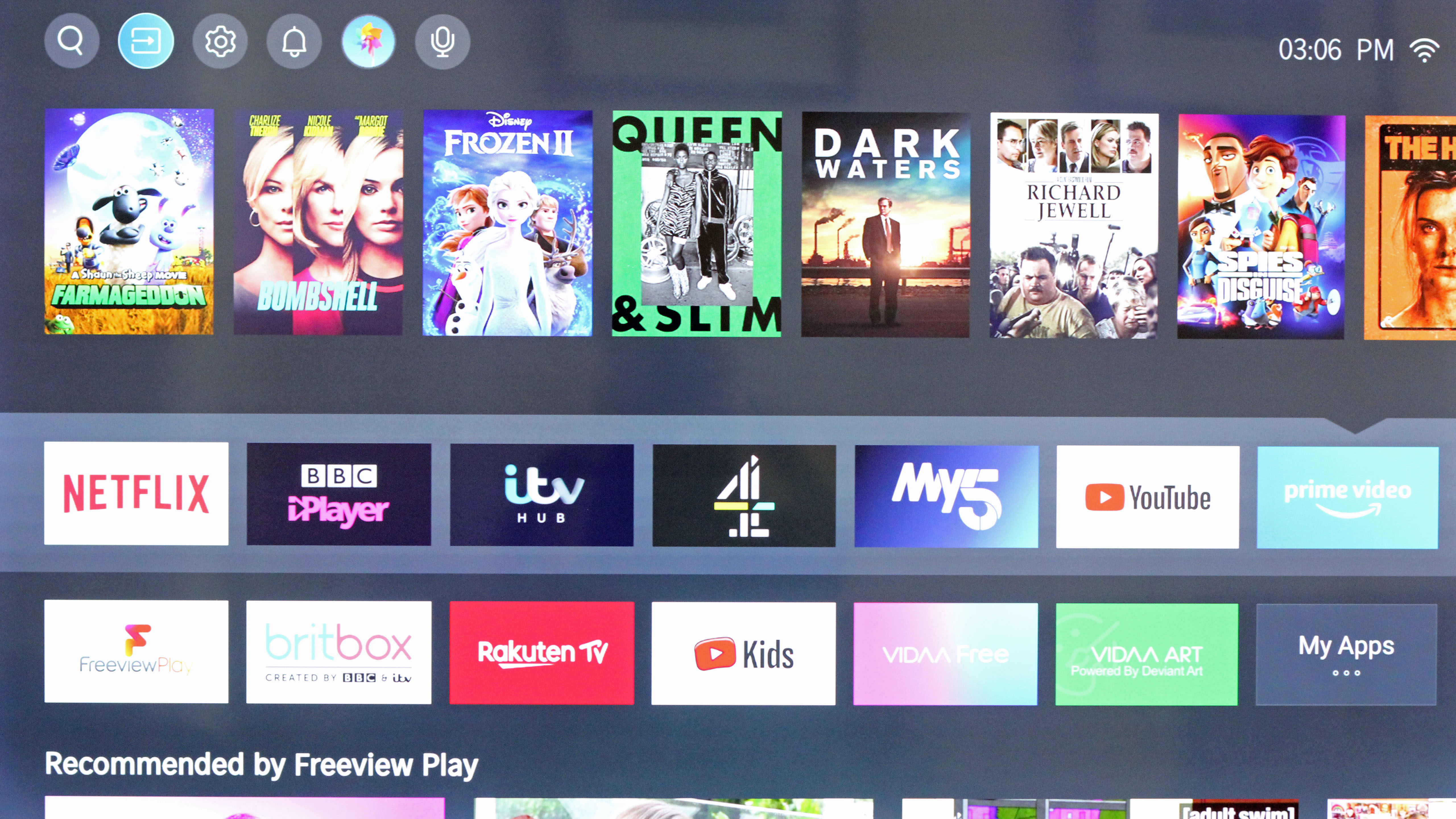
Picture quality
- Universal HDR support
- 8-bit + FRC
- Some motion judder
When it comes to HD video, the Hisense U7QF is more than capable of upscaling for its 4K display. The classic British comedy Hot Fuzz looked sharp and detailed – with none of those grainy filters you often get with sub-standard upscaling – while also showing off the U7QF’s exceptional brightness control.
Whether looking at the dim bulbs of a pub, car headlights gleaming after dark, or the daylight cascading through an office window, this Hisense set was fully able to focus up to 700 nits peak brightness where it mattered, without notable blooming in surrounding pixels. 700 nits isn’t incredibly high, of course, compared to the 1,000-2,000 nits of some new Samsung TVs, but the U7QF knows what to do with what it’s given.
4K HDR video looks just as good, with impressively natural skin tones and generally impactful color. Watching Netflix’s #BlackAF (Dolby Vision), the 4K picture is crystal-sharp, and able to make both the rich red of a patterned blouse and the dull khaki of a tracksuit both look sharply color-accurate (important for a show with such a well-dressed cast). The purple and blue wash in a nightclub scene, too, clearly shows off a depth of color beyond SDR.
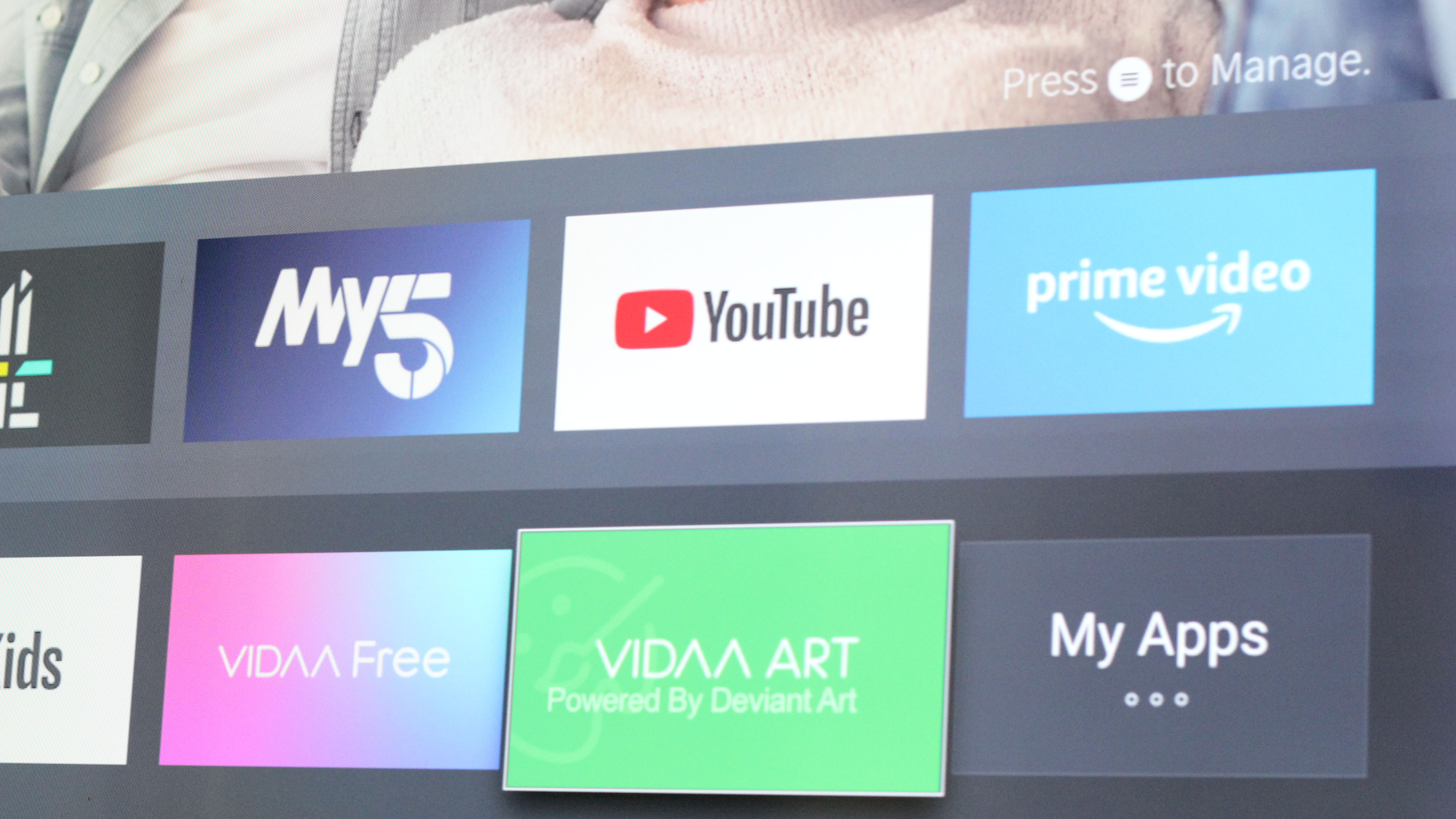
However, it’s worth noting what level of HDR this Hisense TV can actually output.
You’ll find universal HDR support here, matching Panasonic TVs in the inclusion of Dolby Vision, HDR10+, and HLG (hybrid log gamma). Proper HDR requires 10-bit color and 1,000 nits of brightness though, and the U7QF falls short on both counts. You’ll find 8-bit + FRC (frame rate control) here instead, which attempts to mimic the larger color palette of 10-bit. It does this by quickly flickering between two color states, giving the impression of another, third color between the two.
It’s a smart workaround, through bear in mind you’re not quite getting the real thing, and it can cause some occasional onscreen flicker we’d rather do without, though it’s largely negligible.
The main place the U7QF suffers is in its motion control. Sudden camera movements, or even just cuts to a new scene can cause the frame rate to drop, disrupting the picture with artefacts that can’t keep up with the camerawork. When watching Jason Statham flick The Mechanic, a quick flurry of movement would cause sections of the screen to lag behind others. For thrillers and action movies, then, the U7QF won’t be your best option, though it’s still a minor issue that won’t outright ruin your casual watching.
With sub-20ms input lag, too, this set should perform adequately for gaming, though there are gaming TVs out there that do this metric better – and the poor motion control means this might not be a winning TV for the likes of Call of Duty: Warzone or Apex Legends.
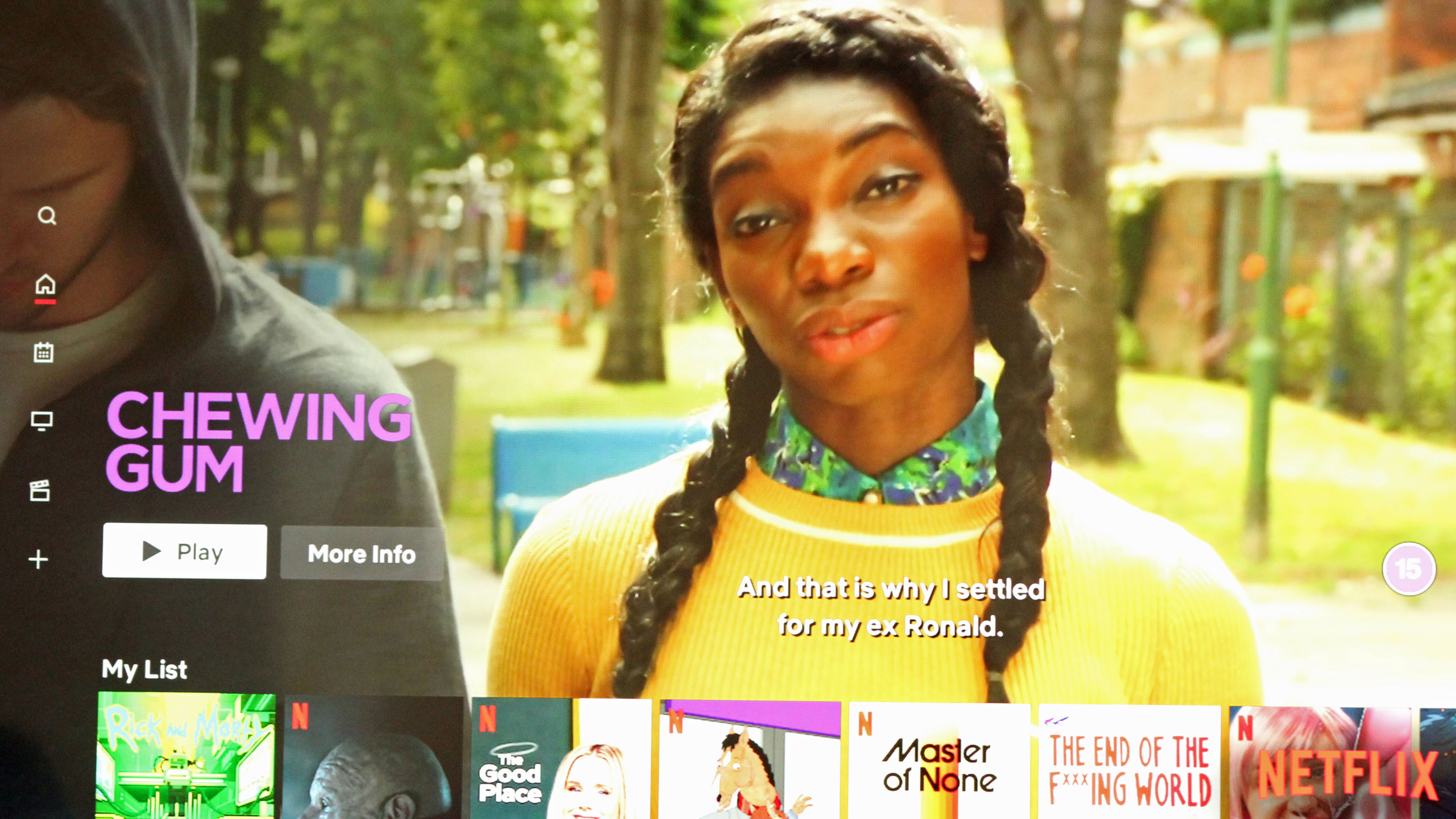
Audio performance
The Hisense U7QF has potential in the sound department, even if you’ll need some additional equipment to realize it.
The built-in speakers only amount to 20W (2x10W in stereo), which is to be expected at this price point. While the mid-range drivers are limited in their range of frequencies, they’re also entirely innocuous. You won’t much bass here, for one, but the sound is never harsh or grating, and holds up even at higher volumes.
Don’t be fooled by the mention of Dolby Atmos support, though. While the set is Atmos compatible, you won’t hear the benefit over the set’s built-in speakers. What you can do, though, is link up the television to a soundbar via HDMI ARC and hear the surround sound format the way it was meant to (that is, if it’s a Dolby Atmos speaker you’ve plugged into it).
Should I buy the Hisense U7QF TV?
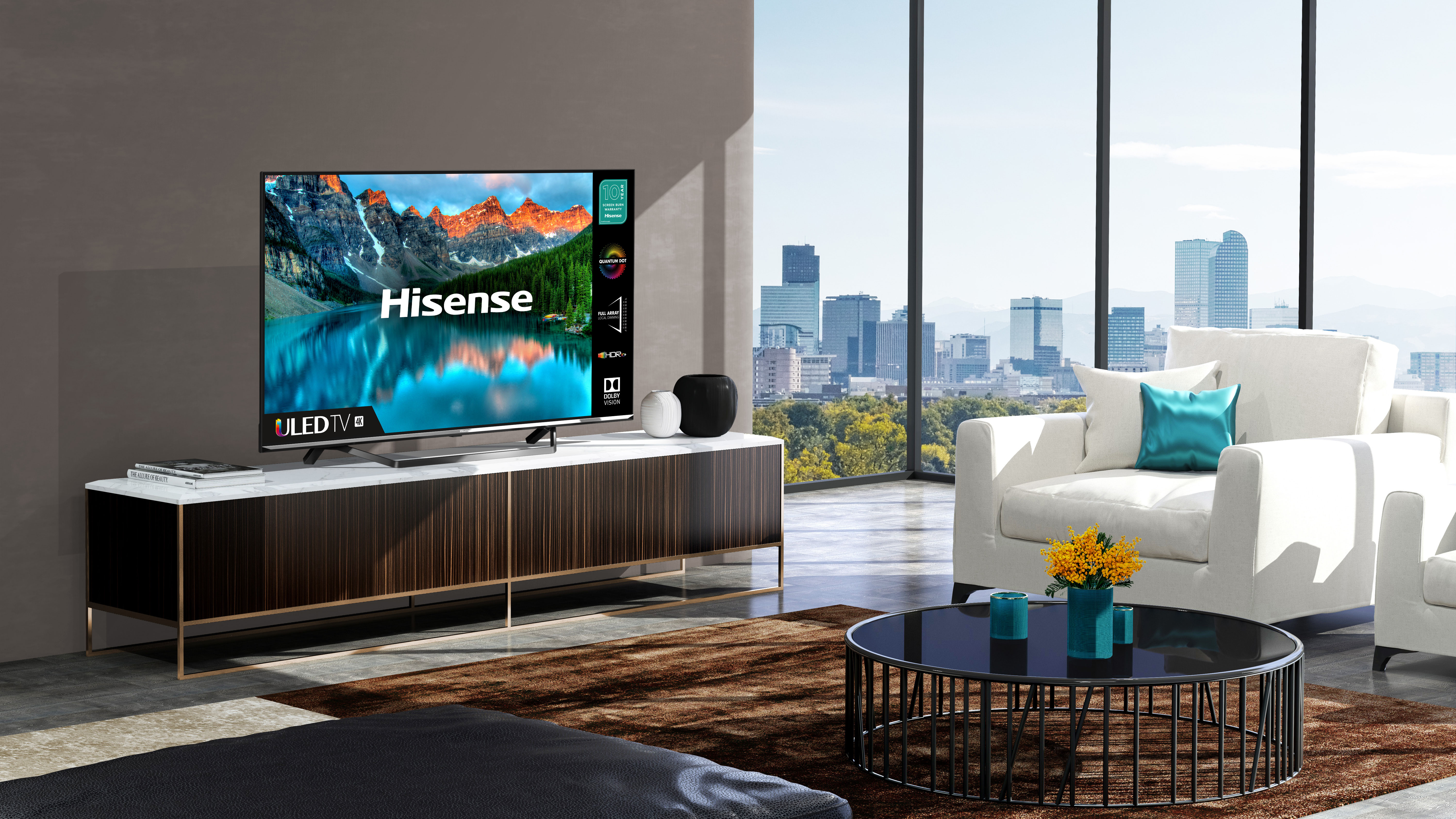
Buy it if...
You want a good-looking television. The Hisense U7QF has a sleek design and angular stand solution that will be sure to look good even when the TV is off.
You want excellent upscaling. The U7QF makes HD sources shine as much as native 4K, with pleasingly crisp resolution.
You want capable HDR and vivid color. While you're not getting true 10-bit HDR here, Hisense's 8-bit+FRC solution still looks a good sight better than regular SDR. Universal HDR support means you can watch in both Dolby Vision and HDR10+ too.
Don't buy it if...
You want true 10-bit HDR. You’ll only get 8-bit here, with some fancy FRC processing to try and bridge the gap, and the 700 nits brightness isn’t the 1,000 needed to really show off HDR either.
You want decent audio. The U7QF only has 2x10W speakers, and you’ll need some additional audio equipment to make use of the set’s Atmos capabilities.
You want smooth motion. The U7QF struggles with fast movement at times, and while it’s able to course-correct pretty swiftly, it might be the best choice for edge-of-your-seat action movies or sports matches.
- Check out the best TVs this year
from TechRadar - All the latest technology news https://ift.tt/395lgh6
via IFTTT
0 التعليقات: